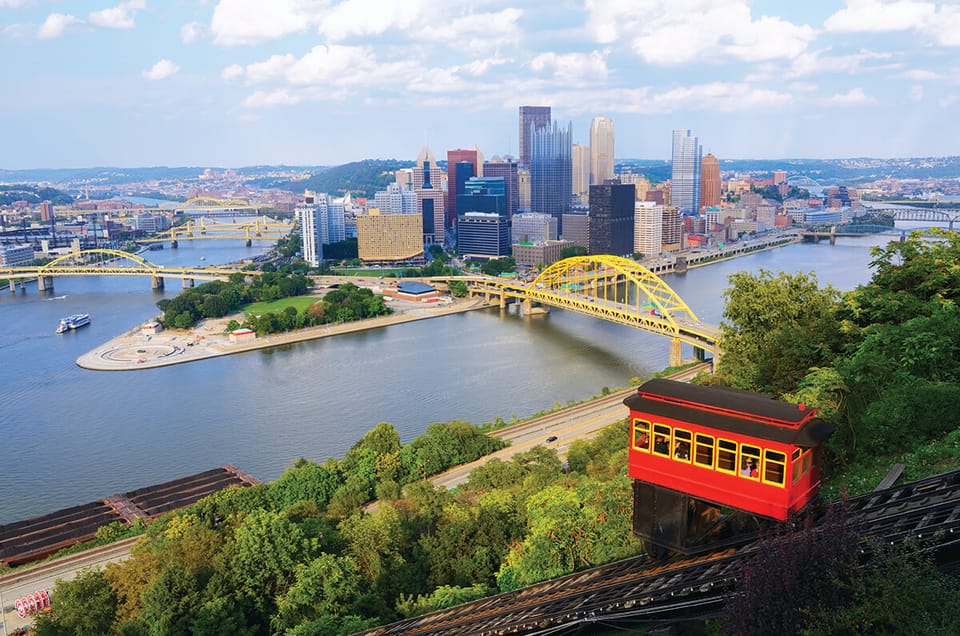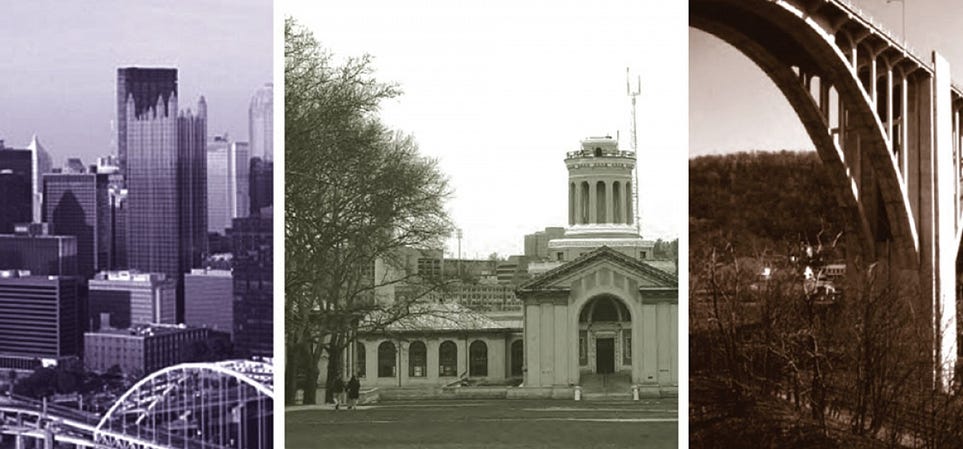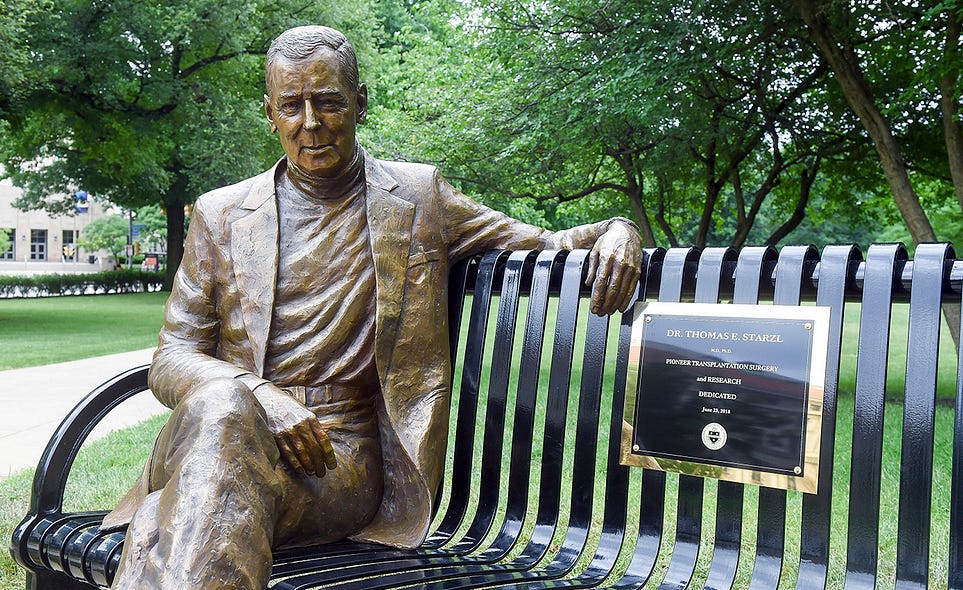Rootedness and Return: A Personal Reflection on Coming Back to Pittsburgh

“To be rooted is perhaps the most important and least recognized need of the human soul.”
— Simone Weil, in The Need for Roots
“People grow up in Pittsburgh and leave… but they always come back.”
I remember hearing this as a kid living in the suburbs of Pittsburgh. As a young kid, I was fascinated by this idea of a ‘place’ having such a hold on people — old neighborhoods, familiar streets, family rootedness. I remember talking to people who left Pittsburgh and moved off to California, North Carolina, Florida, Texas, New York City…even overseas… and then they always came back to this “big small town” of Pittsburgh — a city which one travel writer once rather cheekily called “the Paris of Appalachia”.
In previous articles, I explored the concept of ‘nomadism’ in the modern world. But here, I would like to meditate on the importance of ‘rootedness’.
In an age of global mobility, remote work, and cultural transience, the notion of staying tied to a particular place is often seen as quaint or even regressive. Cities and neighborhoods are treated like interchangeable backdrops to the personal pursuit of opportunity. This trend can be witnessed in my hometown of Pittsburgh, where neighborhoods which were once filled with families, homes and children are now populated with students, professionals, and single people on the move.
Yet many people are coming back to Pittsburgh to ‘settle down’ and to find a home here. It’s not surprising that they do. Pittsburgh, over the years, is consistently voted among the top cities in the country to live in. In fact, Forbes Magazine ranked Pittsburgh as the #3 most livable US city in 2025. And yet… as I reflect on my return to Pittsburgh, I feel that this return represents, for me, something profoundly countercultural: the necessity of being rooted.
The Modern Temptation to Uproot
The modern narrative encourages constant motion: move where the jobs are, chase better climates, follow the mirage of “elsewhere.” Especially within some religious communities today, there is even pressure to move overseas for spiritual or communal fulfillment. And sometimes these moves can make sense. I myself have lived for years in a monastery away from my “home” of Pittsburgh. And why would a Muslim, for example, not want to live in a Muslim country? Or a Buddhist in Nepal or Thailand?
Though I see the wisdom in such moves, I feel that there is still a downside to this sort of ‘displacement’. There is a cost to uprooting ourselves, a cost that is paid not only in personal dislocation but in the erosion of communal life and cultural memory.
The Case for Rootedness: Wendell Berry, Simone Weil, and Heidegger

I’ve always been a fan of Wendell Berry. I read him during my time in the monastery, and I felt that much of what he wrote could have been incorporated in our monastic understanding of place, land, and community.
Wendell Berry writes passionately about the sacredness of place. In The Unsettling of America, he warns: “A community is the mental and spiritual condition of knowing that the place is shared… It is the knowledge that people have of each other, their concern for each other, their trust in each other, the freedom with which they come and go among themselves.” To abandon one’s home, Berry argues, is to participate in the disintegration of both land and community.
Similarly, Simone Weil, in The Need for Roots, declares: “To be rooted is perhaps the most important and least recognized need of the human soul.” She argues that uprootedness is a central spiritual and social malady. People who are detached from their places become more susceptible to manipulation, more alienated, more lost. For Weil, to be truly human is to be grounded — not in abstract ideals but in concrete soil, in neighborhoods, in communities, and in histories.
Martin Heidegger’s Building, Dwelling, Thinking complements this view by philosophically framing the idea of “dwelling” as the deepest expression of human being. Heidegger writes, “Only if we are capable of dwelling, only then can we build.” For him, true building is not just the construction of physical structures but the cultivation of places where human life can genuinely unfold in harmony with the world.
The Sacred Geography of Pittsburgh

Pittsburgh is not just a backdrop for me; it is sacred geography. Many times in my early 20s I would set off on foot and explore the city as a sort of urban nomad — without a phone or map or direction. Just wandering the city. Photographing. Observing. Taking in the buildings. The people. The cracked sidewalks, the bridges, the neighborhoods with their uneven streets — these are not merely locations. They are places of memory, fragments of my own past and my own story. My rootedness here is not simply nostalgic. It is the place where my life unfolds.
There is a kind of holiness in the particularity of place. Sacred places. Pilgrimages. The divine is not encountered in abstraction but in the tangible streets, buildings, and communities where our lives are actually lived. Sacredness is often found in the ordinary, in the familiar corners of our neighborhoods, in the faces we pass each day. In my 20s, I befriended the ‘street people’ I saw every day asking for change on the streets. In time, a relationship and a bond formed. And we would talk about faith and God and life. It became a sacred connection.
For me, Pittsburgh is such a place of sacred connection— not simply where I reside, but where presence, memory, and purpose meet.

Pittsburgh is also — quite literally — Mr. Rogers Neighborhood. In my 20s, I would often — during a time working at a florist — deliver flowers to Mr. Rogers’ wife, Joanne. The city, for me, has the same sort of charm as you see exemplified in Mr. Rogers’ children's show. A real neighborhood. A place where people care for each other. Look after each other. Say hello to each other every day.
Or it was memories of greeting Dr. Thomas Starzl every morning when he came in to Starbucks where I worked to get his coffee. World-famous transplant surgery pioneer — and genuinely kind and friendly man. And now, walking through the Oakland neighborhood of Pittsburgh as he has reposed, I see a kindly statue of his sitting on a park bench at University of Pittsburgh in his memory. And people sit and stake their photo with him. This memory of a man… still alive in this place… and in me.

The City as a Living Body
Living in the city is fundamentally different from living in the suburbs. The city is an organic, living mass of people — an organism composed of relationships, neighborhoods, and shared spaces, much like the human body is composed of cells working in concert. The suburbs, by contrast, often foster a kind of solipsistic solitude, where people exist in insulated bubbles, disconnected from the pulse of communal life.
Jane Jacobs, in The Death and Life of Great American Cities, argues: “Cities have the capability of providing something for everybody, only because, and only when, they are created by everybody.” She saw the city as a living, breathing entity where spontaneous community thrives in its very density and diversity.
Rebecca Solnit captures this spirit when she writes: “The street is the river of life of the city, the place where we come together, the pathway of the collective.” In a city, people are not simply adjacent; they are entangled in each other’s lives in ways that resist the isolating tendencies of suburban sprawl.
This is why my return to Pittsburgh feels so vital. It is not merely a return to a geographical location but to a communal organism. The neighborhoods here form a tapestry in which I am one thread among many. It is here, in this living body, that I find not just residence but belonging.
And at the beating heart of that “belonging” is the masjid — the Islamic Center of Pittsburgh.
Rootedness in Pittsburgh’s Islamic Community

My rootedness in Pittsburgh would not be complete without acknowledging the extraordinary hospitality and warmth I have encountered within the Islamic community here. From my earliest interactions as far back as 2001, I have experienced an openness, a generosity of spirit, and a sincere welcome that has deeply shaped my sense of belonging.
In the mosques, community centers, and homes of Pittsburgh’s Muslims, I have found not only faith but real love and friendship. The hospitality I have been shown is not merely social politeness; it is the sacred ethic of ikram al-daif — the honoring of the guest — which is deeply embedded in Islamic tradition. The Prophet Muhammad (peace be upon him) said, “Whoever believes in Allah and the Last Day should honor his guest.”
The shared meals, the open invitations, the easy conversations after prayers — these are not small gestures; they are the very threads that weave a person into the fabric of a community. The Muslims of Pittsburgh, in their sincerity and kindness, have shown me what it means to be truly at home.
In them, I have seen a living expression of the city’s organic body: each person, each family, forming a vital part of the whole. Sharing in our joys, our struggles, our trials and tribulations… and very often in those quiet moments bowing our heads together before our God.
My ties to this community are not incidental; they are part of the deep roots that ground me here. They are very much my family.
The Countercultural Necessity of Staying Put
Ivan Illich, in Tools for Conviviality, warns us about something I’ve felt in my own life — that modern post-industrial society is quietly turning us into “clients of large systems.” We stop being neighbors and start becoming customers. “Cogs in the machine,” if you will. We stop participating in our own communities and begin to outsource our lives to distant, impersonal structures. Illich invites us to return to what he calls convivial tools — things that strengthen local life, that bring us face-to-face with each other, that restore the human scale to how we work, eat, worship, and live.
In a similar spirit, E.F. Schumacher, in Small is Beautiful, reminds us that “the fundamental task is to achieve smallness within large organizations.” Schumacher believed that we need to resist the pull of scale for its own sake. Bigger isn’t always better. The life that actually nourishes us is one we can touch, one we can walk to, one where we know each other’s names. It’s not about rejecting organization — it’s about making sure our structures are human-sized and our lives remain embedded in the real relationships of our neighborhoods and towns.
Both Illich and Schumacher are calling us back to something simple but deeply radical: stay close to what’s real. Stay close to what’s near. Stay close to the people and places where you can actually show up and make a difference.
For me, coming back to Pittsburgh is exactly that. It’s not a retreat from the world, and it’s certainly not a failure to “find bigger opportunities.” It’s a declaration. It’s a choice to love this particular place and to build my life among these particular people. It’s a way of saying that the world is not just something we visit — it’s something we tend. And I want to tend this soil. I want to grow here. I want to continue building a life of presence and belonging — here, in this city, with these people.
Wendell Berry once wrote:
“The world cannot be discovered by a journey of miles, no matter how long, but only by a spiritual journey, a journey of one inch, very arduous and humbling and joyful, by which we arrive at the ground at our feet, and learn to be at home.”
That’s what this return to Pittsburgh has been for me — a journey of one inch, and an arrival at the ground beneath my feet.

If you like this content, please consider a small donation via PayPal or Venmo. I am currently studying Islam and the Arabic language with no income (though this will change very soon!), and any donation — however small! — will greatly help me to continue my studies, my work, and my sustenance. Please feel free to reach me at saidheagy@gmail.com.
Thank you, and may God reward you! Glory to God for all things!